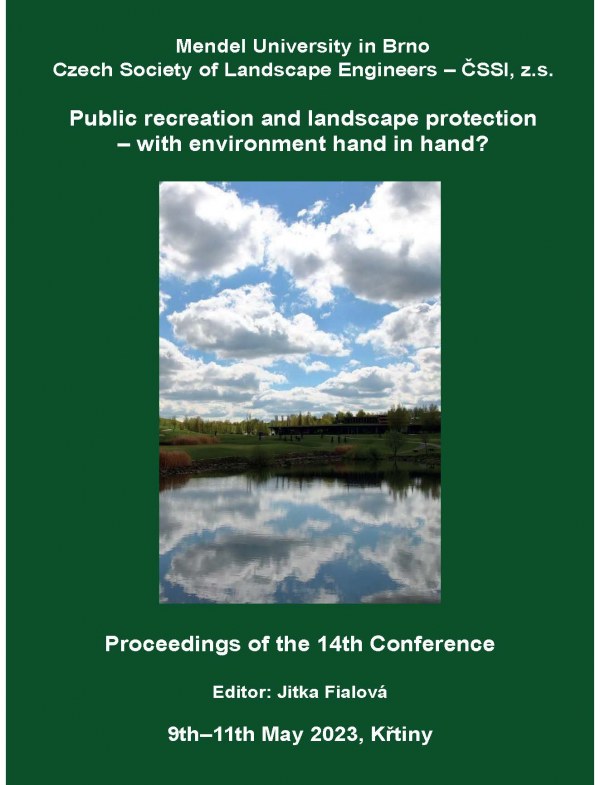
DOI: 10.11118/978-80-7509-904-4-0057
EXPLORING THE RECREATIONAL POTENTIAL OF URBAN GAPS
- Tímea Žolobaničová, Miroslav Čibik, Roberta Štěpánková
Při zkoumání této problematiky jsme objevili potenciál prieluk pro rekreaci. Metodicky tato místa umíme identifikovat díky pixelové analýze a také proměňovat díky prvkům zelené a modré infrastruktury. Dlouhodobé nebo krátkodobé intervence na těchto mezerách jsou důležité pro města, protože poskytují novou rozmanitost v zastavěném městském systému a možnosti rekreace pro obyvatele v blízkosti jejich domovů. Začlenění těchto měst více do městského organismu a vytvořit pro ně modulární řešení, která by je dokázala o trochu více urbanizovat a poskytnout obyvatelům k rekreaci je velká příležitost. Do doby, dokud se jim nenaskytne jiná – lepší příležitost v městském urbanismu. Je to příležitost, která dokáže efektivně doplnit veřejná prostranství a lépe spolupracovat s okolím. Vandalismu je v našich podmínkách běžný, ale tato místa nepotřebují přímou ochranu. Dokážou to samé. Proto jsou méně nákladná než klasická veřejná prostranství. Díky aplikacím zelené a modré infrastruktury mohou mít i tato místa rovnocenné zastoupení a kolemjdoucí je nemusí obcházet. Zeleň v těchto místech přiláká i různé rostliny a živočichy kterým bylo místo z důvodu výstavy předtím sebráno a oni mohou osídlovat to co už člověk předtím opustil. Ztracená místa, vágní terén, bílá místa, městské mezery, proluky se staly městem ve městě, druhým světem, městem naruby. Je to jiný, divoký svět ale funguje a když podpoříme jeho potenciál přinese společnosti novou dimenzi městské rekreace.
Klíčová slova: recreation, urban voids, terrain vague, gap-sites, vacant lot
stránky: 57-62, Publikováno: 2023, online: 2023
Reference
- Back Prochnow, S., Čibik, M. (2022). Unconventional Interventions on Redeveloping Unused Urban Landscapes Based on Social Interactions. Acta Horticulturae et Regiotectuare, 25(1), 92-98.
 Přejít k původnímu zdroji...
Přejít k původnímu zdroji... - Calvino, I. (1997). Invisible cities. Vintage publishing, pp. 160. ISBN 978-00-994-2983- 8
- Carr, S. et al. (1992). Public Space. Cambridge: University Press, pp 400. ISBN 780-52-135-9601-3
- Clément, G. (2016). Manifeste du Tiers paysage. DU COMMUN, pp. 60. ISBN 979-10- 956-3005-0
- Cément, G. (2016). Not absolute control. In: Landscape teory. [online] Available at: https:/landscapetheory1.wordpress.com/tag/gilles-clement/
- EZOP 257. (2016) PSÁT O MĚSTĚ: EZOP 257 - Graffiti, pohyb městem. Available at: https:/www.youtube.com/watch?v=NAUvAqQQHf4
- Haluzík, R. (ed.) a kol. (2020). Mesto naruby Vágní terén, vnitřní periferie a místa medzi místy . Praha: Academia, 400 s. ISBN 978-80-200-3041-2
- Haluzíková, Ľ. (2020). Vágni Praha: studio work. Praha: FA ČVUT, Praha.
- Lososová, Z. et. al. (2011). Diversity of Central European urban biota: effects of human-made habitat types on plants and land snails. DOI: 10.1111/j.1365-2699.2011.02475.x
 Přejít k původnímu zdroji...
Přejít k původnímu zdroji... - Marišová, E., Fandel, P. (2021). Basic visions of Slovakia's environmental strategies: a case study in two selected regions. Strategy and innovations in the raw materials policy of the Slovak Republic and the EU - historical development of the importance of raw materials. Book of abstracts. 2022, pp.104
- Mariš, M.,Marišová, E. (2021). Innovations in Waste Enterprising: TheApproaches to Waste Recovery, Innovative business and start-ups in current business environment, pp. 48.
- Picon, A. (2000) "Anxious Landscapes: From the Ruin to Rust." Translated by Karen Bates. Grey Room 1 (September), 64-83. DOI:10.1162/152638100750173065.
 Přejít k původnímu zdroji...
Přejít k původnímu zdroji... - Sádlo, J. (2019). KRAJINA!. Kodulek. pp. 78-120. ISBN 978-80-906-3115-1
- Trancik, R. (1986). Finding Lost Space: Theories of Urban Design. Wiley. ISBN 978-04-712-8956-2
- Vitková, Ľ. (2015). Methods of evaluating public spaces. Alfa Stuba,33. Available at: https://alfa.stuba.sk/wpcontent/uploads/2020/05/1_2015_4_Vitková-1.pdf
- Witting, R. (2004). The origin and development of the urban flora of Central Eu- rop. Urban Ecosystem, 7, 323-329. DOI: 10.1007/s11252-005-6833-9
 Přejít k původnímu zdroji...
Přejít k původnímu zdroji... - Žolobaničová, T. (2022). Stratené miesta města. Diploma thesis. Nitra: ÚKA, FZKI, SPU in Nitra.


